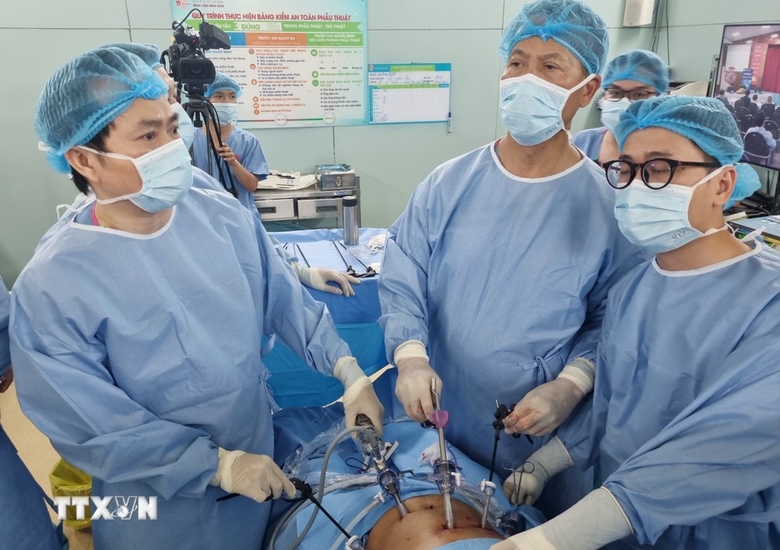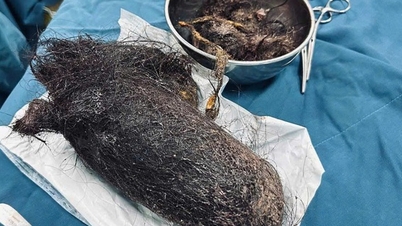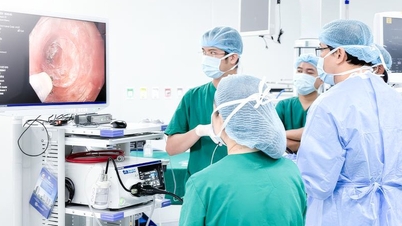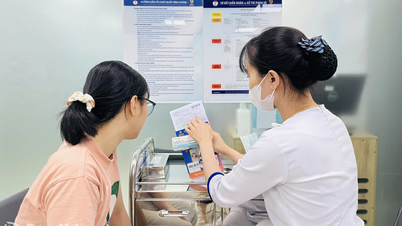At Binh Dan Hospital, on average there are about 700 visits per day for gastrointestinal diseases; of which about 20-30% (equivalent to about 200 people) have symptoms of gastric reflux.

“It is estimated that about 10 million Vietnamese people suffer from gastroesophageal reflux disease. Although it is a common disease, it still has the risk of malignant transformation leading to cancer.” This information was shared at the scientific conference “Update on surgical treatment of gastroesophageal reflux disease” organized by Binh Dan Hospital in Ho Chi Minh City on April 6. The conference attracted the participation of leading domestic and international experts.
Doctor Nguyen Phuc Minh, Head of the Department of Digestive Surgery, Binh Dan Hospital, said that gastroesophageal reflux is a condition in which fluid and food from the stomach refluxes, causing symptoms or complications. The disease occurs due to changes in the gastroesophageal valve, which prevents this valve from closing tightly, causing fluid from the stomach, including acid and bile, to reflux from the stomach into the esophagus. Currently, about 10% of the Vietnamese population, equivalent to about 10 million people, suffer from gastroesophageal reflux disease.
In fact, at Binh Dan Hospital, there are an average of 700 visits per day for gastrointestinal diseases; of which about 20-30% (equivalent to about 200 people) have symptoms of gastric reflux. The number of Vietnamese people suffering from this disease is on the rise, partly due to lifestyle.
Sedentary lifestyle, overweight and obesity, unhealthy eating habits increase abdominal pressure leading to increased stomach pressure and reflux. In addition, the habit of working immediately after eating or lying down immediately after eating can also easily cause reflux.
According to Dr. Nguyen Phuc Minh, if not treated effectively, patients will not be able to eat or have difficulty eating, even leading to esophageal cancer.
At the workshop, Professor Ninh Nguyen (University Hospital Irvine, University of California, USA) coordinated a live demonstration surgery for two patients with persistent gastroesophageal reflux. These two cases often suffered from heartburn, discomfort and were not responsive to medical treatment. The patients underwent surgery using the Omega 300 AP technique to create an anti-reflux valve for gastroesophageal reflux.
According to Professor Ninh Nguyen, this is the method currently being applied to treat gastroesophageal reflux disease in the United States. Thanks to the above techniques, patients can be discharged from the hospital just 24 hours after surgery.
At the workshop, experts focused on discussing the following topics: overview of gastroesophageal reflux disease, management of gastroesophageal reflux according to evidence-based medicine, and method of creating anti-reflux valve using Omega 300 AP technique.
Source




![[Photo] General Secretary To Lam arrives in Minsk, begins state visit to Belarus](https://vphoto.vietnam.vn/thumb/1200x675/vietnam/resource/IMAGE/2025/5/11/76602f587468437f8b5b7104495f444d)


![[Photo] General Secretary To Lam concludes visit to Russia, departs for Belarus](https://vphoto.vietnam.vn/thumb/1200x675/vietnam/resource/IMAGE/2025/5/11/0acf1081a95e4b1d9886c67fdafd95ed)



























![[Photo] National Assembly Chairman Tran Thanh Man attends the Party Congress of the Committee for Culture and Social Affairs](https://vphoto.vietnam.vn/thumb/1200x675/vietnam/resource/IMAGE/2025/5/11/f5ed02beb9404bca998a08b34ef255a6)


























































Comment (0)